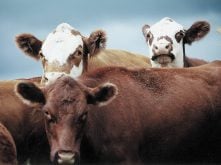This cattle market information is selected from the weekly report from Canfax, a division of the Canadian Cattlemen’s Association. More market information, analysis and statistics are available by becoming a Canfax subscriber by calling 403-275-5110 or at www.canfax.ca.
Active fed trade
Alberta direct cattle sales saw active trade last week, and average prices continued to soften from early June annual highs. Live trade was reported $1.50 per hundredweight lower than the previous week at $162 per cwt., and the bulk of rail sales were $3-$4 per cwt. lower at $273 per cwt. delivered.
Read Also

Pakistan reopens its doors to Canadian canola
Pakistan reopens its doors to Canadian canola after a three-year hiatus.
Average steer prices last week were $16 per cwt. higher than the five-year average, the largest spread this year. Western Canadian fed cattle slaughter for the week ending June 19 was nine percent larger than the previous week and the largest this year at 46,222 head. Year to date, western fed slaughter was 22 percent larger, totalling 984,440 head.
Canadian fed cattle/cow exports to the United States for the week ending June 12 were 24 percent larger than the previous week at 4,918 head and 41 percent lower than the same week last year.
Most Ontario trade saw prices fully steady with the previous week at $270 per cwt. delivered. A handful of trade was reported around $1 per cwt. lower than the previous week at $269 per cwt. delivered for the following week’s harvest.
Fed prices historically ease in the last week of June. They’ve done so in seven of the previous 10 years. Spring high prices occurred later than usual this year. Fed prices typically deteriorate through the end of the third quarter, but feedlot supplies remain current and carcass weights are manageable.
In the U.S., northern live prices were US$1-$2 per cwt. higher than the previous week from $125-$126 per cwt. Dressed sales were generally $1 per cwt. higher than the previous week’s Nebraska rail average with the bulk of trade at $197 per cwt. delivered in a full $195-$202 per cwt. delivered trade range.
More cows to market
Non-fed volumes through commercial auctions usually tighten at this time of year and cow slaughter volumes usually drop, but that isn’t the case this year. Last week, many commercial auction facilities reported 200-400 cows on offer. Dry conditions across parts of the Prairies have brought a few more cows to market.
Western Canadian cow slaughter for the week ending June 19 totalled slightly more than 7,500 head. For the middle of June, it was the largest slaughter since 2010. That volume might seem alarming, but western Canadian cow prices are at a sizable premium against the U.S. market, so fewer cows are being exported and more are being slaughtered in Western Canada.
Despite ample offerings, prices are holding up. Last week’s D2 average was $102.33 and D3s averaged $88.88 per cwt.
Bred cows were selling last week in a range of $1,500-$1,725 per head. Cow-calf pairs were at $1,700-$2.625.
Cutout plummets
In U.S. beef trade, cut-out values plummeted. Choice slid almost US$19 per cwt. lower to average $307.42 and Select dipped more than $11 lower to average $276.14. Total U.S. slaughter was slightly smaller than the previous week at 661,000 head.
Strong feeder market
Last week’s feeder cattle market was stronger across the board. Feeders heavier than 900 pounds were the shining star as prices advanced $4-$8 per cwt. Steers and heifers heavier than 700 lb. established new annual price highs.
Most of the bigger feeders are coming out of background lots, but there have been a few grass yearlings at the market as well. Lots of grass cattle being marketed have been out on pastures for 30 to 45 days. Given dry conditions, many of these grass cattle are coming to market a couple months earlier than normal. Not surprisingly, weights are 100-150 lb. lighter than they would be traditionally.
The forward market was lightly tested last week for yearlings and calves. Last week, 950-1,060 lb. steers in Alberta and Saskatchewan for August/September delivery traded from $181-$191 per cwt. Steer calves weighing 500-599 lb. in British Columbia and Alberta for October delivery traded from $223-$234 per cwt. with a weighted average price of $228.30 per cwt. based at 580 lb.
New crop barley prices in Western Canada have not pulled back. Moisture concerns are keeping new crop barley bids firm in the $295-$300 per tonne area delivered into southern Alberta.














